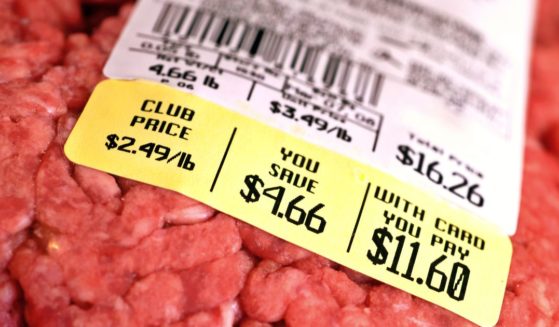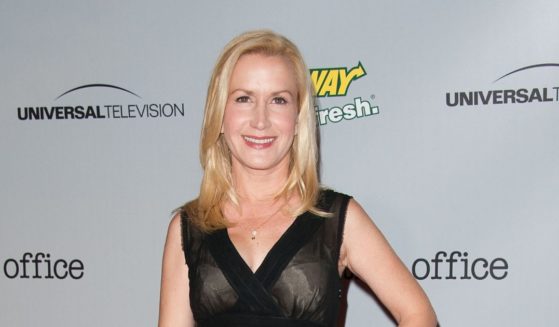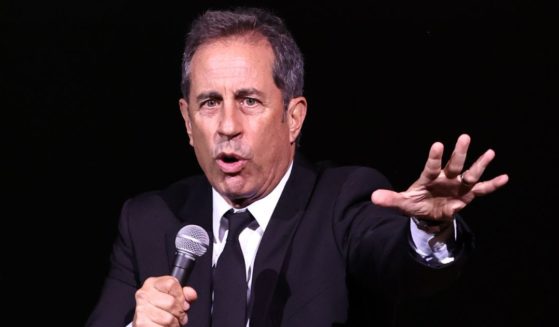Financial Report Reveals Disney's 'Indiana Jones' Sequel Was Epic Disaster
Anyone old enough to remember “Ishtar?”
For years, the Elaine May written-and-directed 1987 action-comedy starring Dustin Hoffman, Warren Beatty and Charles Grodin was a byword for a flop caused by spending gone amok. While the homage to the Hope-and-Crosby “Road to…” films of of the ’40s and ’50s was never as bad as critics said it was — it’s good, if weird — studio executives were right when they groused quite publicly that the estimated $55 million budget — $152 million in 2024 money, according to the Inflation Calculator — for an oddball comedy was way too high. Surprise of surprises, it didn’t recoup that, grossing only $14 million at the box office, according to IMDb.
Say what you will about “Ishtar,” but studio executives at least had the common sense in 1987 to regret throwing obscene amounts of cash at a high-profile film, despite the fact it was directed by a comedy legend and starred three iconic actors.
Meanwhile, in the present, studio executives had no qualms throwing $387.2 million at a limp, bland, uninteresting “Indiana Jones” sequel — and that was before the costs of promoting and distributing the film. (If you want a quick and dirty estimate of how much that will set studios back, basic Hollywood math says you double the budget to make the film and come up with the final break-even cost.)
Surprise of surprises, Disney is stuck with a bomb that makes “Ishtar” look like a financially responsible decision in retrospect. (And, in this writer’s opinion, a better film — but that’s for another day.)
So, let’s get down to the dry numbers about “Indiana Jones and the Dial of Destiny,” one of summer 2023’s most underwhelming box-office bombs. That $387.2 million figure is from ScreenRant, which also noted that number included $79 million in post-production costs incurred during the early months of 2023, just prior to the film’s release.
“Directed by James Mangold, the fifth and seemingly final installment in the beloved Indiana Jones franchise sees Harrison Ford return as the intrepid archeologist to seek out Archimedes’ Antikythera mechanism. The film earned somewhat mixed reviews from critics, and ended up significantly underperforming at the box office upon its release in theaters last summer,” ScreenRant reported earlier this week.
Now, keep in mind that, according to financial reports obtained by Forbes, Disney got a bit of a break because of tax incentives offered by the U.K. government, which allows production companies to recoup up to a quarter of their costs incurred in Britain.
Financial statements show that the government reimbursed PLT Productions — the Disney subsidiary that handled the “Dial of Destiny” production — $44.7 million.
However, “Dial of Destiny” only took in $384 million in global box office. Theaters that show the film take home about half of that — again, much like the promotion budget, this is rough math — meaning that, all things considered, “Dial of Destiny” lost $134.2 million for Disney.
ScreenRant noted, however, that “this figure doesn’t take into account marketing costs nor revenue generated from merchandise and physical media sales.”
That’s not good for Disney, either. While merchandising can indeed be a boon for companies, I have a kid, which means I know other kids and their parents — and the toys they ask them for. Not once have I heard a fellow parent complain about how little Johnny can’t stop talking about the Antikythera Mechanism play-set complete with Indiana Jones action figure he expects for Christmas.
As for physical media sales, please don’t make me laugh; there aren’t enough luddites or hardcore Blu-Ray evangelists (“It’s just like watching it in the theater, man!”) to make up for a hole that deep.
As for the marketing costs, again, that’s a much bigger issue. Not only is there the standard industry math, but think back to last spring and summer: Disney promoted the heck out of this thing. Advertisements and trailers for it were everywhere. Indy was back! And Harrison Ford had been de-aged so he’s almost kinda sorta believable as an action star, if you ignore the uncanny valley effect!
And it lost more money than this:
The loss didn’t happen in a vacuum, either. Disney has been going back to the well far too often on its multitude of intellectual properties, from “Star Wars” to virtually every superhero in the Marvel roster. Most of these retreads share one thing in common: a tired, predictable product being sold on the fact that the property is familiar to moviegoing audiences.
And keep in mind: As eye-popping as the losses are for “Indiana Jones and the Dial of Destiny,” it’ll probably look like a smash hit when compared to “The Marvels.” The November release is the first in the Marvel Cinematic Universe not to break $100 million at the domestic box office, according to Variety. Considering it cost $220 million to make, that’s quite the cash bonfire for the House of Mouse.
Disney CEO Bob Iger blamed the pandemic, in part, for the failure, although not because of ticket sales or moviegoers slow to return to the theater.
“‘The Marvels’ was shot during COVID,” Iger recently said. “There wasn’t as much supervision on the set, so to speak, where we have executives [that are] really looking over what’s being done day after day after day.”
However, the two films do have several things in common besides runaway spending. First, both were tired products with less-than-enthusiastic reviews. Both were also released in the aftermath of Disney’s very public entry into the culture wars with an all-out assault on Florida’s so-called “Don’t Say Gay” bill. The legislation, which bans instruction in gender ideology or sexual orientation for students younger than the third grade in public schools, remains on the books, but the public flag-planting on the matter has led to conservative families foregoing Disney releases or unsubscribing from streaming service Disney+.
Whatever the case, Disney has a long way back to profitability, particularly given the studio’s free-spending ways and over-reliance on series that have grown stale. It’s enough to make Bob Iger wish all he had to deal with was an “Ishtar”-level disaster.
Truth and Accuracy
We are committed to truth and accuracy in all of our journalism. Read our editorial standards.












